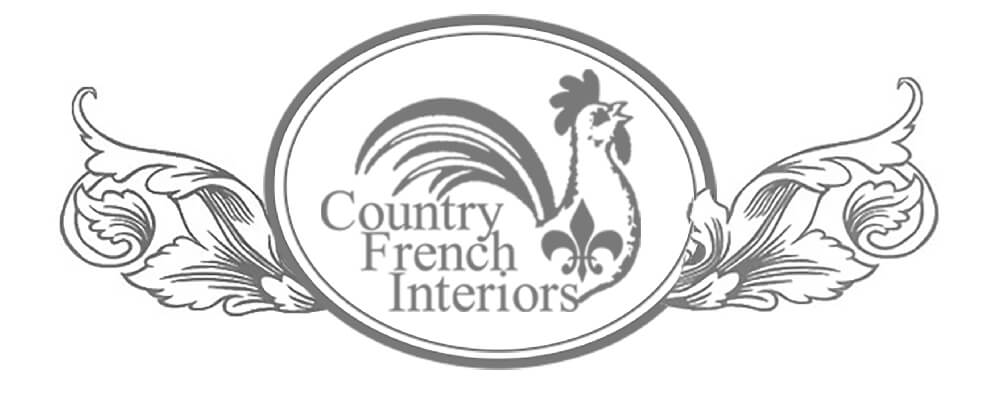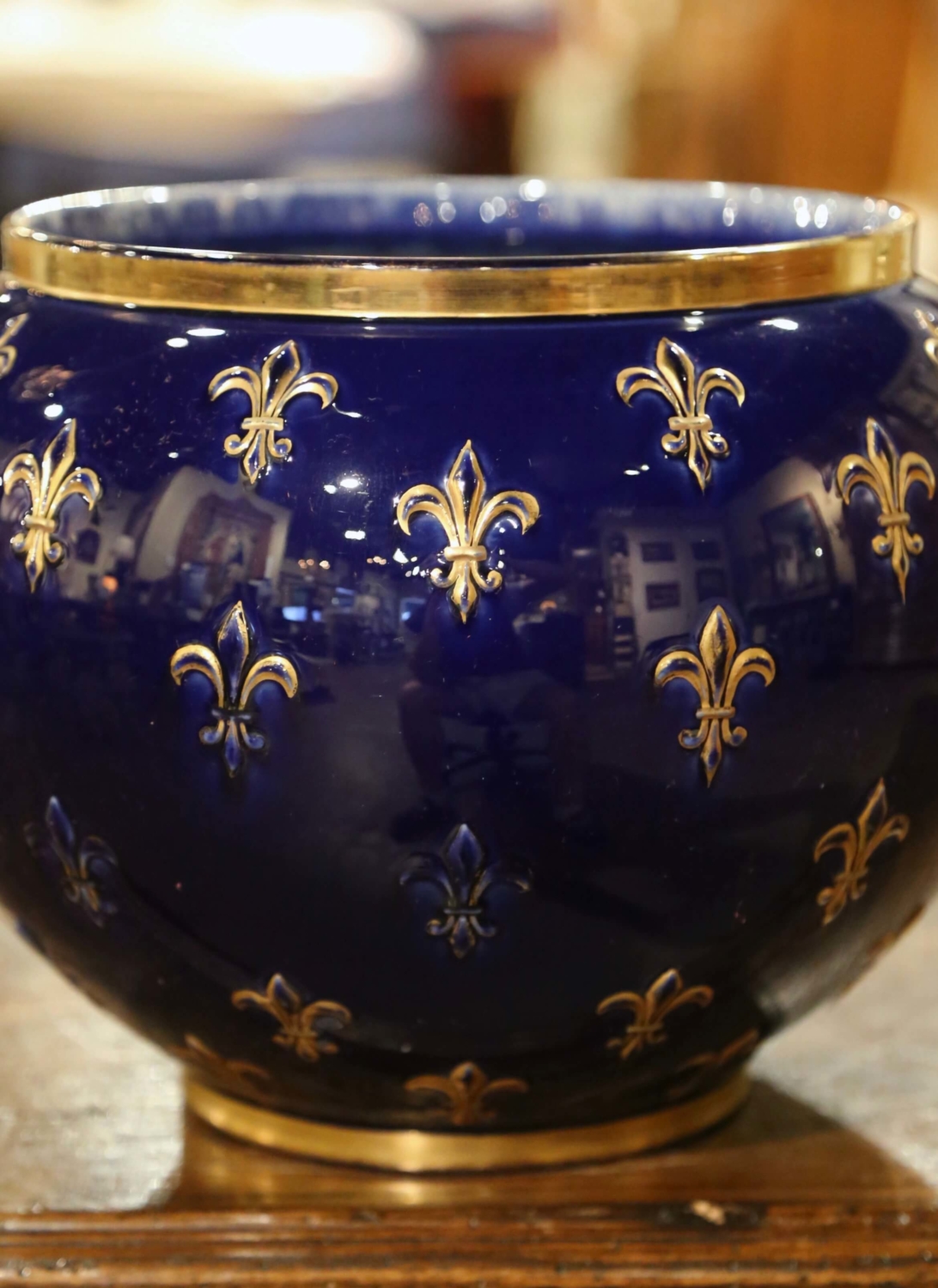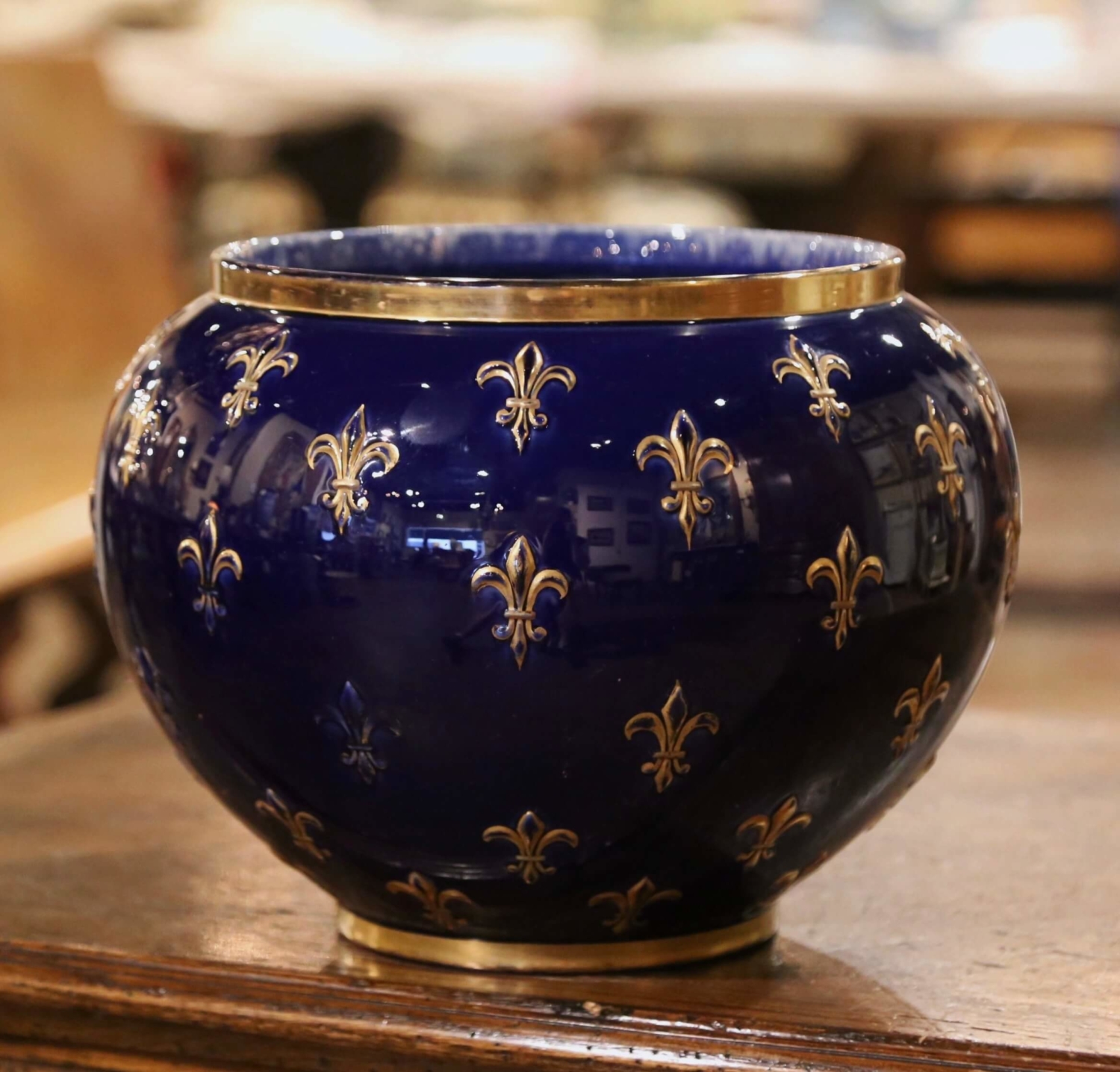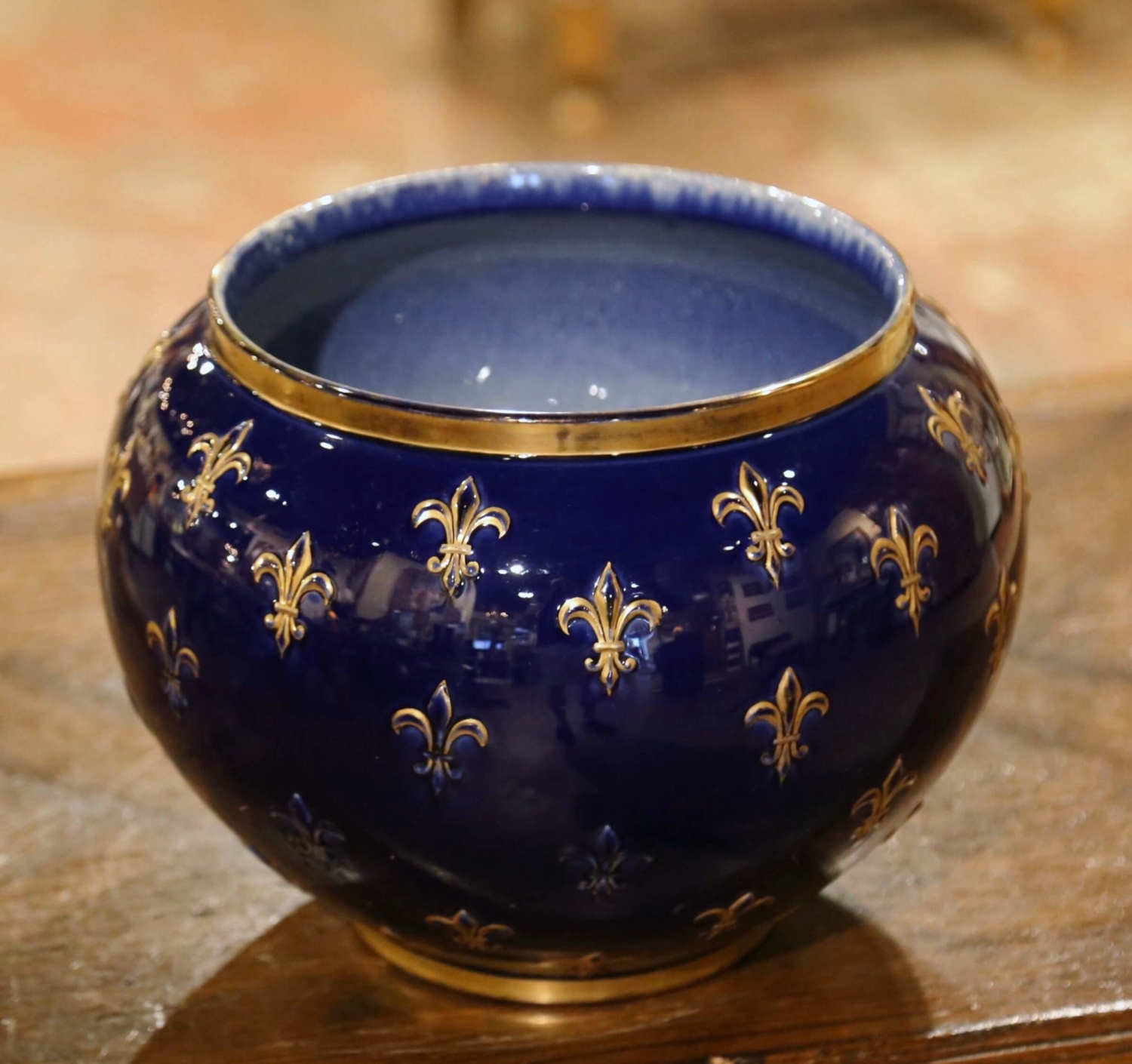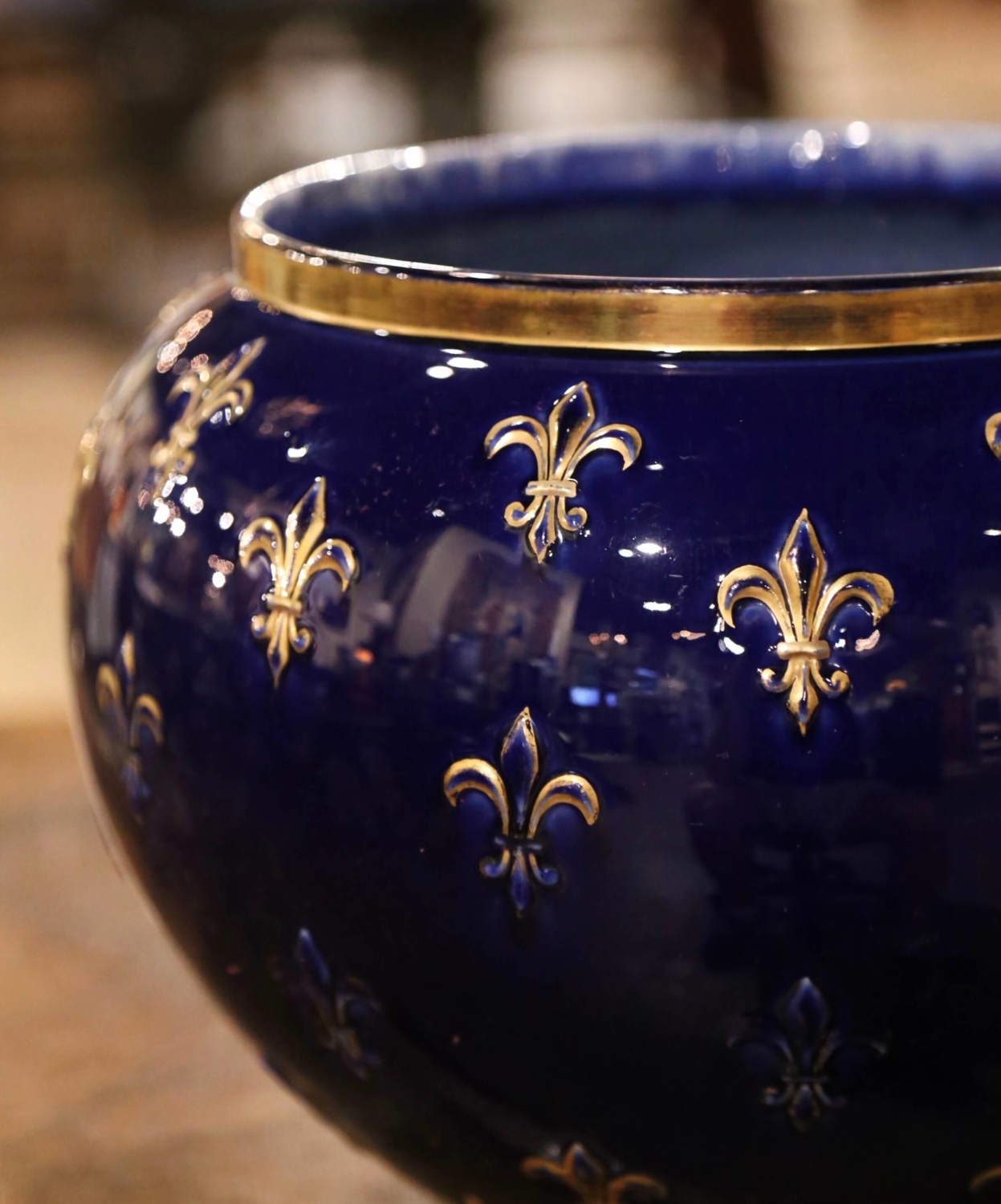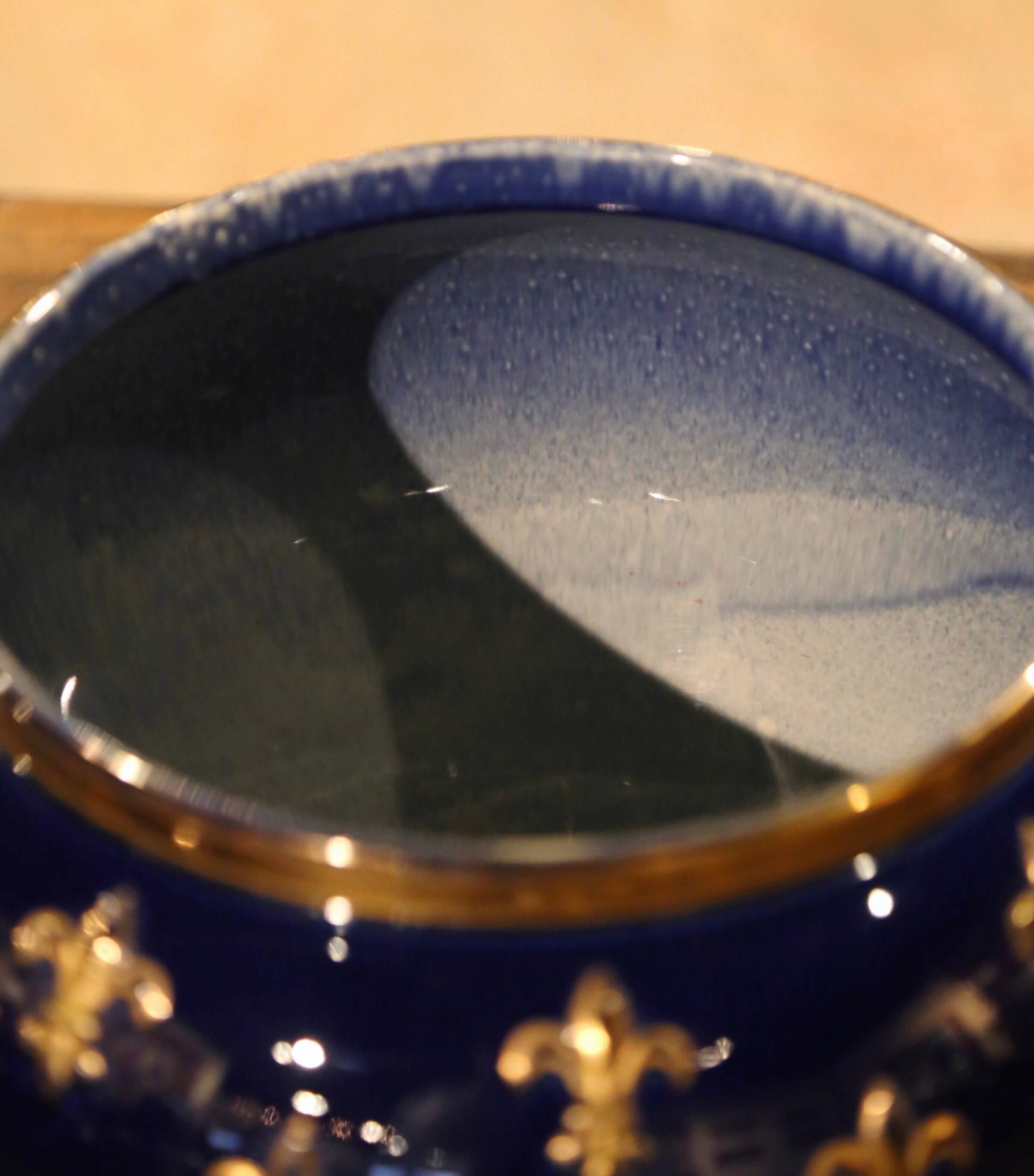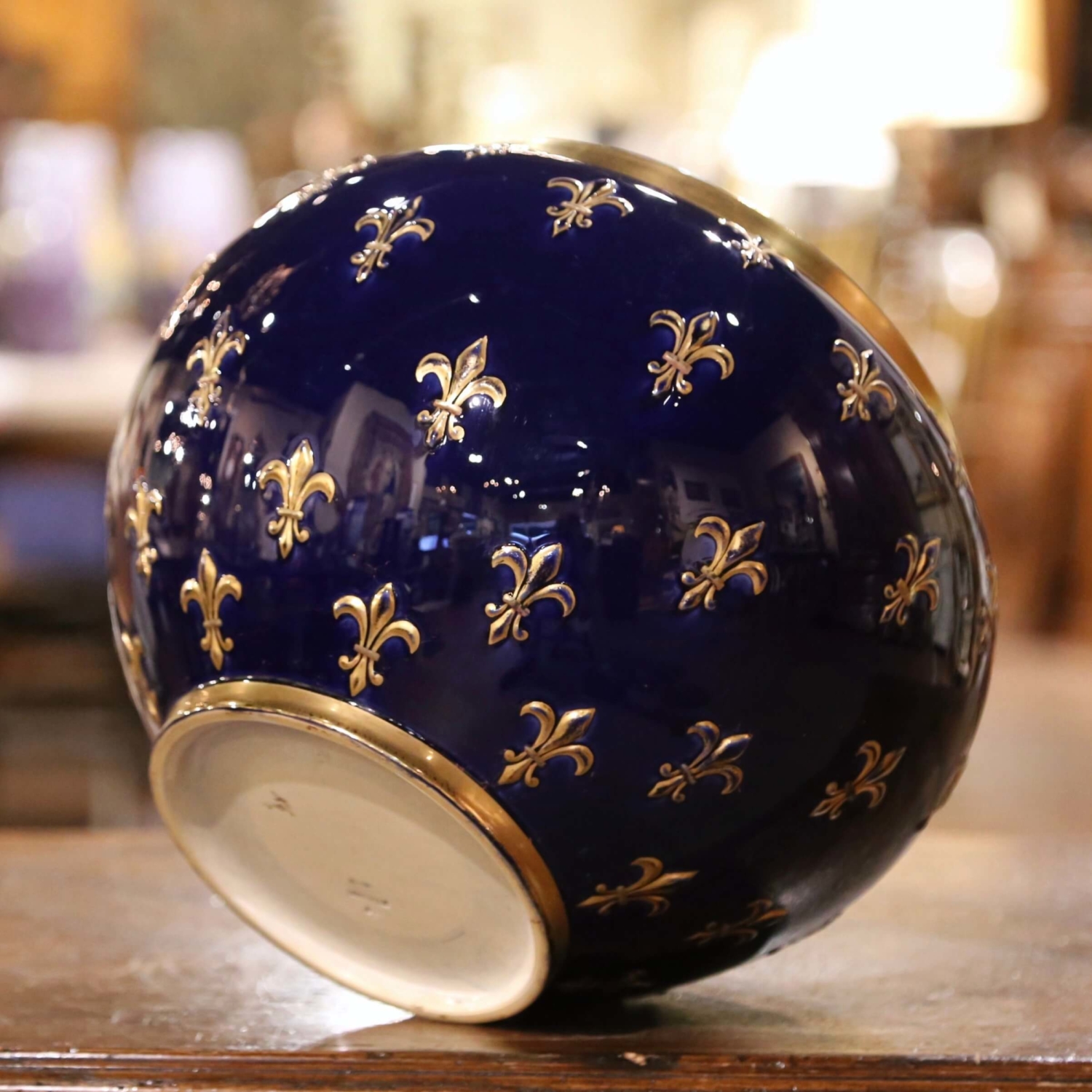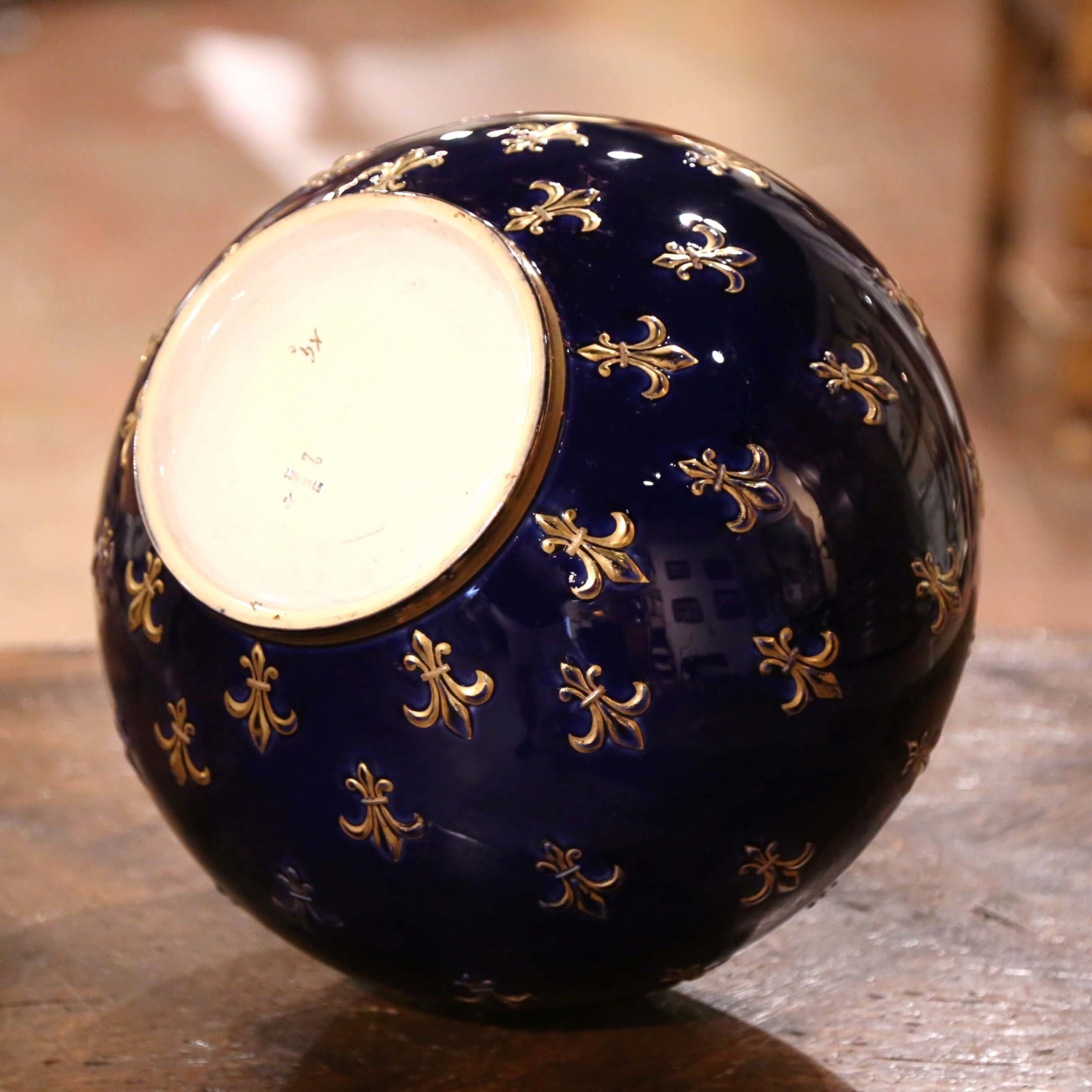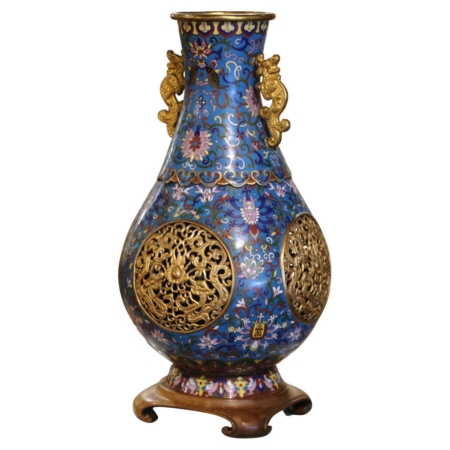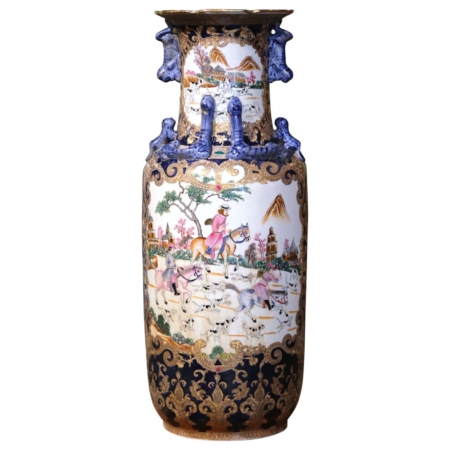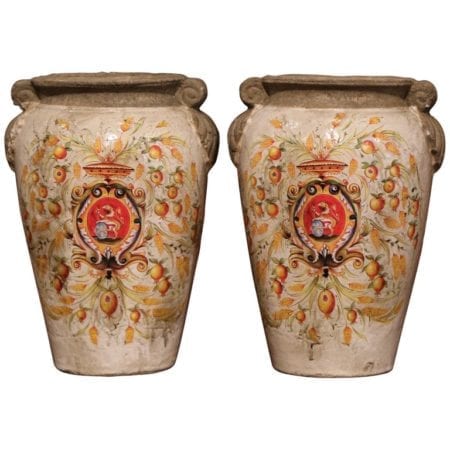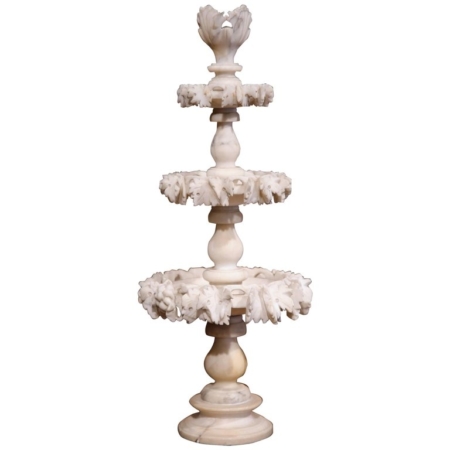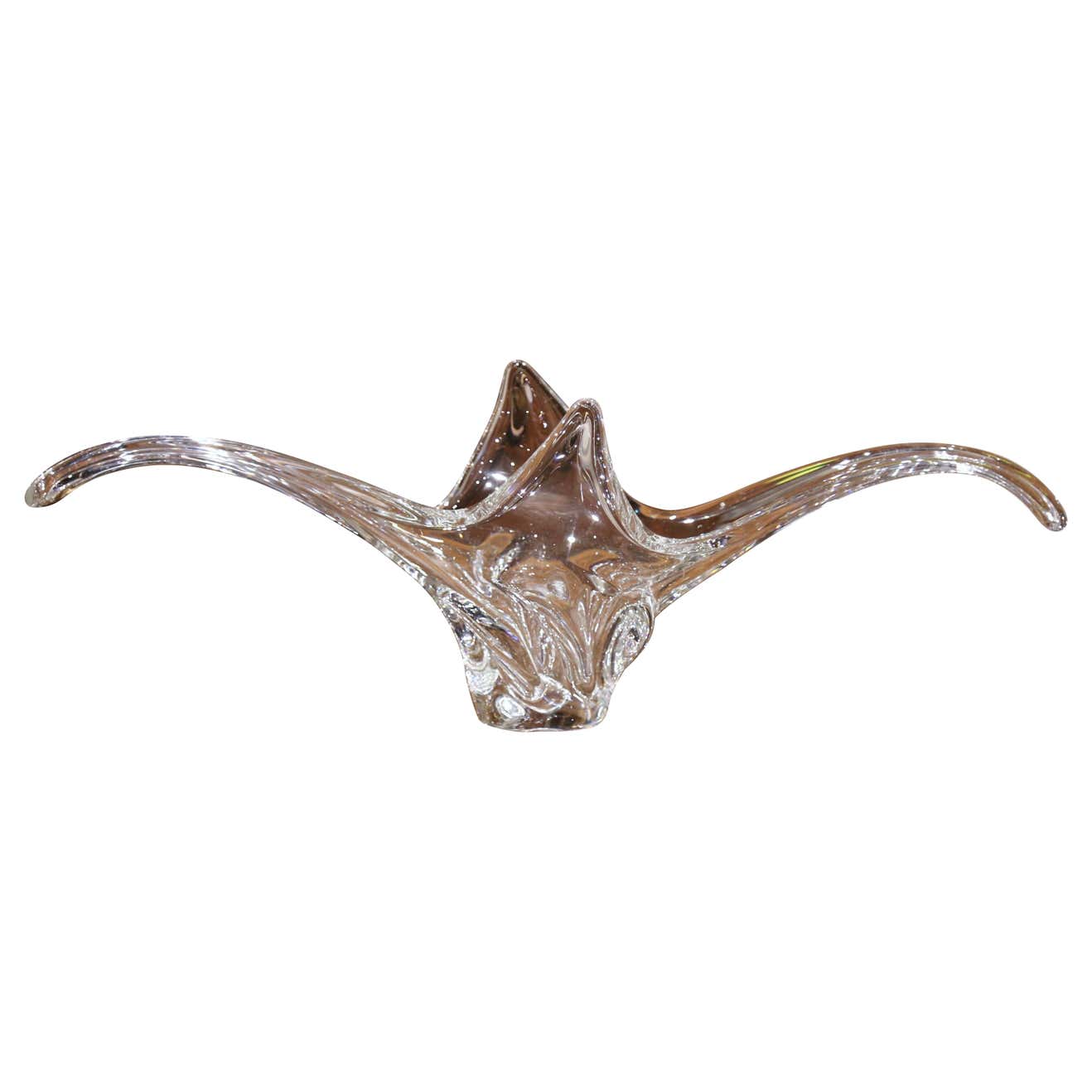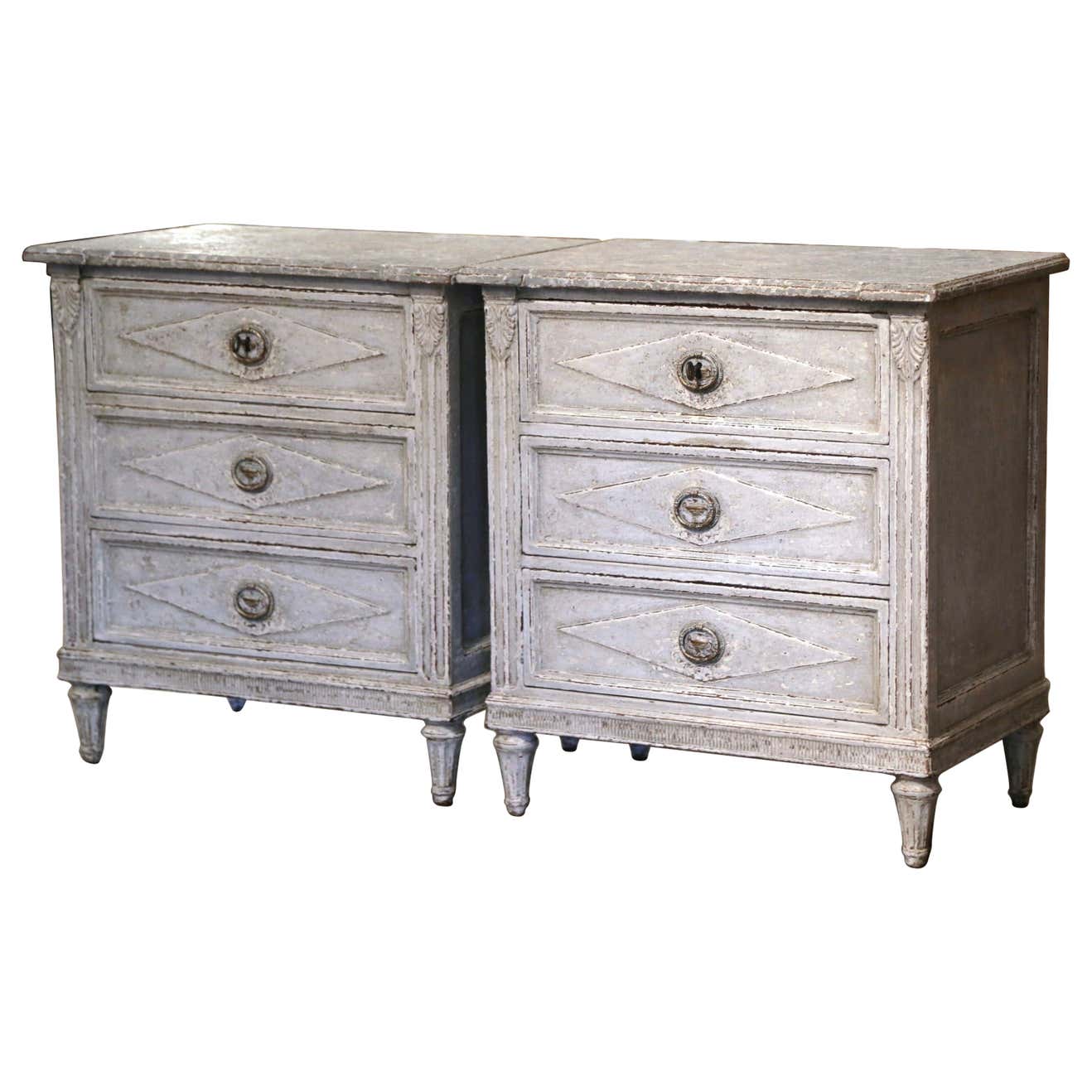Mid-Century French Painted Porcelain Cache Pot with Fleur-de-Lys from Luneville
$1,200
About
Decorate a table or a shelf with this elegant antique planter. Created in the “Faïencerie de Luneville” France circa 1950 and spherical in shape, the large cachepot sits on a round base and is embellished with a delicate, gilt-finished rim at the top. The porcelain planter is decorated with a Fleur-de-Lys pattern in high relief, accented in gilt finish. The unique porcelain piece is in excellent condition commensurate with age and use, and is done in a classic cobalt blue glaze with gilt accents. Signed Luneville on the underfoot for further authentication. Luneville Faience is one of the most famous French pottery manufacturers; it has been located in Lunéville, Lorraine, France since 1730. The first factory, established by Jacques Chambrette in 1723, became the Manufacture Royale du Roi de Pologne (“Royal Factory of the King of Poland”) in 1749, when the exiled king Stanislaw I (Louis XV’s father-in-law) became duke of Lorraine and settled in the town. The Fleur-de-Lis, also spelled Fleur-de-Lys, is a stylized lily (in French, fleur and lis mean ‘flower’ and ‘lily’ respectively) that is used as a decorative design or symbol. The Fleur-de-Lis has been used in the heraldry of numerous European nations, but is particularly associated with France, notably during its monarchical period. As France is a historically Catholic nation, the Fleur-de-Lis became “at one and the same time, religious, political, dynastic, artistic, emblematic, and symbolic,” especially in French heraldry. The Fleur-de-Lis has been used by French royalty and throughout history to represent Catholic saints of France. In particular, the Virgin Mary and Saint Joseph are often depicted with a lily. 12.5″ Diameter 10″H
Additional information
| Dimensions | 12.5" W x 12.5" D x 10" H |
|---|---|
| Style | Louis XV |
| Period | Mid 20th Century |
| SKU | 223-111 |
Related products
Country French Interiors, Inc.
1428 Slocum St.
Dallas, TX 75207
(214) 747-4700
